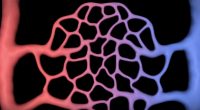
- Excerpt
Several countries have halted the use of Oxford/AstraZenica’s COVID-19 “vaccine” because of very serious to lethal thrombotic incidents immediately following vaccination. These incidents were predicted by medical Professsor Sucharit Bhakdi and a number of outstanding medical scientist-colleagues in a 28 February 2021 letter to the Ms Emer Cooke, the Secretary General of the European Medicines Agency. In their letter, the members of the “Bhakdi Panel” unanimously noted “that a wide range of side effects is being reported following vaccination of previously healthy younger individuals with the gene-based COVID-19 vaccines. Moreover, there have been numerous media reports from around the world of care homes being struck by COVID-19 within days of vaccination of residents. […] We are concerned that there has been and there continues to be inadequate scrutiny of the possible causes of illness or death under these circumstances, and especially so in the absence of post-mortems examinations. In particular, we question whether cardinal issues regarding the safety of the vaccines were adequately addressed prior to their approval by the European Medicines Agency (EMA).”
Table of contents
Testing the safety of “vaccines-for-all”
The vaccination programs currently underway around the world are forced upon us as the only effective way to “beat” the COVID-19 virus. In their compulsive obsession to annihilate the latest member of the family of Corona viruses, international and national public health bureaucracies have determined that everyone shall be vaccinated. To reach that goal, they openly threaten non-vaccinated individuals with being excluded from travelling, going to concerts, participating in public and large private events, and, in countries such as Israel, even from going to work or to school. These draconian policies are brazenly enforced without taking account of the fact that populations not only consist of vibrantly healthy non-infected people. Many of us have developed natural immunity against the Covid-19 virus or suffer from mild, serious or life-threatening health conditions such as cardiovascular disease and cancer. When you indiscriminately force vaccination upon an entire population without considering the health condition of each individual, you run the serious risk that in people whose health is sub-optimal the vaccine will cause more harm than that it may prevent. So, before public health authorities allow a “vaccine-for-all” on the market, they should have established with certainty if, and if so how, the vaccine in question may or will affect groups of people who suffer from a certain condition or disease. This is highly relevant in medicinal practice, because doctors must be able to provide answers to patients who ask whether taking the vaccine will not worsen or lengthen their particular disease condition. Such risks must have been positively and categorically excluded before a marketing authorization is given to a vaccine.
A matter of great urgency
In other words, before you allow a vaccine on the market, you must exclude potential side-effects in vulnerable groups. This mis especially relevant when you allow the use of vaccines, such as all Covid-19 vaccines, that are still in the experimental phase. In the case of the Oxford/AstraZenica vaccine, the side effects reported after allowing the vaccine on the market are blood clots (thrombosis) and what is called “disseminated intravascular coagulation” (DIC), which is a condition in which blood clots form throughout the body, blocking small blood vessels. Such events can take place in young and healthy people, but, understandably, they pose a much greater risk in people who suffer from a weak or impaired cardiovascular system. It is an established fact that especially older people are afflicted by circulatory problems such as impaired blood flow in the narrowest ‒ microvascular ‒ part of the circulatory system. So, “as a matter of great urgency,” the Bahkdi Panel requested the EMA to provide it with responses regarding these issues.
Vaccines in your bloodstream !?
The Panel pointed out that unless it was proven that the intramuscular vaccines – injected into your upper arm – do notreach the bloodstream and do not disseminate throughout the body, “it must be expected that the vaccines will remain entrapped in the circulation and be taken up by endothelial cells.” The endothelial cells form the protective inner lining of the entire circulatory system. If the constituents of the vaccines end up in the circulatory system, there is good reason, according to the Bahkdi Panel, to expect that their uptake by the endothelial cells “will happen particularly at sites of slow blood flow, i.e. in small vessels and capillaries.” So, unless it was proven with certainty that the uptake of vaccine content by endothelial cells does not occur, it must be expected that when the vaccines do what they’re supposed to do in the endothelial cells – produce viral elements that are supposed to trigger the immune system – some of the produced particles will be “presented” at the surface of the cells that are in contact with the blood. When these particles are not known by the immune system and regarded as foreign intruders, which is obviously the case with the Covid-19 vaccines, they will trigger an immediate immune response.
Endothelial cells will be attacked
Many people have white blood cells (lymphocytes) that recognize such unknown viral elements. This may be due to a prior COVID infection, but also to previous encounters with other members of the large family of Coronaviruses. According to the Bahkdi Panel, “we must assume that these lymphocytes will mount an attack on the respective cells.” When certain (CD8) lymphocytes recognize a viral or foreign particle on endothelial cell membranes, this event can trigger the release of signaling substances (cytokines) that set off the alarm bells in the entire immune system. CD8 lymphocytes will then release compounds that enter the cells and cause their death. So, unless it was proven with certainty that such a lymphocytic attack on the endothelial cells does not occur, it must be expected that damaged endothelial cells will activate blood coagulation at countless sites throughout the body and will cause myriad lesions potentially also in the brain, spinal cord and heart. The Bhakdi medical Panel warns that bleeding disorders might occur in the wake of this novel type of what is called “Disseminated Intravascular Coagulation” (DIC). DIC is a condition in which blood clots form throughout the body, blocking small blood vessels. Symptoms may include chest pain, shortness of breath, leg pain, problems speaking, or problems moving parts of the body.
Thrombocytopenia …
… means shortage of thrombocytes or platelets. Platelets are colorless particles in the blood that help stop loss of blood by forming clots (thrombi) at the site of the bleeding. When you cut your finger, platelets immediately come to the rescue to stop the bleeding so that you won’t bleed to death. Platelets only live some 10 days, so they must be renewed all the time. When they’re used up faster than they’re produced, a shortage in platelets occurs. This can take place during pregnancy, in case of autoimmune diseases such as rheumatoid arthritis, or when you have a serious bacterial infection. It is also common in cases of SARS-Covid-19 and other viral infections. Although life-saving, platelets are a double edged sword. You don’t want blood clots when they’re not needed (thrombosis) and you don’t want a platelet shortage when they’re needed to stop a bleeding. Unfortunately when platelets get massively involved in undesired thrombotic events, caused for instance by endothelial cells that were damaged by Covid-19 vaccines, this creates a shortage which in turn causes bleedings. This is what the Bahkdi Panel warned about, not because thrombocytopenia occurs in case of an infection, but because it may occur in the case of the vaccination that is supposed to treat the infection ! This can also happen because particles produced by endothelial cells as a result of the vaccine’s activity bind to platelets, which results in their undesired activation. This is how the Covid-19 vaccines may produce blood clotting and bleeding. Precisely the same effects as those produced by the Covid-19 virus.
What can you do ?
If, for some reason, you have been or cannot avoid being vaccinated, the best thing you can do is keep your endothelial cells in top condition, so that the time that each cell will be exposed to the vaccine’s ingredients will be as short as possible. There should be no points of “standstill” in the circulatory system not even in the microvasculature, which is the narrowest part of your circulatory system, consisting of small vessels and capillaries. Most of the research performed with Dr. Masquelier’s OPCs focused on their beneficial effects on endothelial cells, notably on capillary permeability and fragility. The conclusion isn’t difficult. If you want to minimize the risk of experiencing the thrombotic and bleeding problems that might be produced by the Covid-19 vaccines, you must protect your endothelial cells by taking OPCs. If you want to maximize the chance that OPCs will provide such protection, don’t think twice and use the OPCs that were used and proven effective in numerous clinical trials: Dr. Masquelier’s OPCs.






